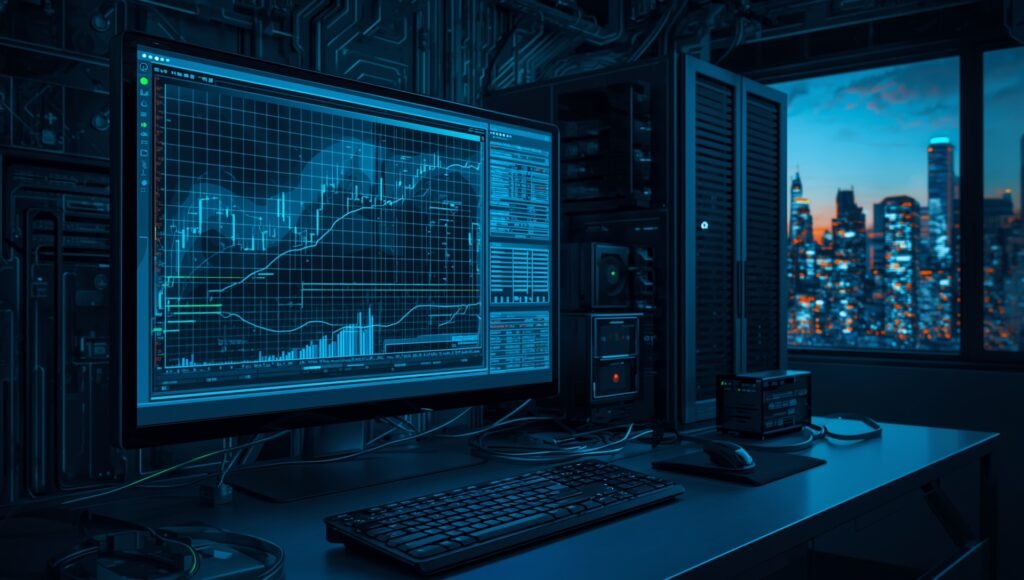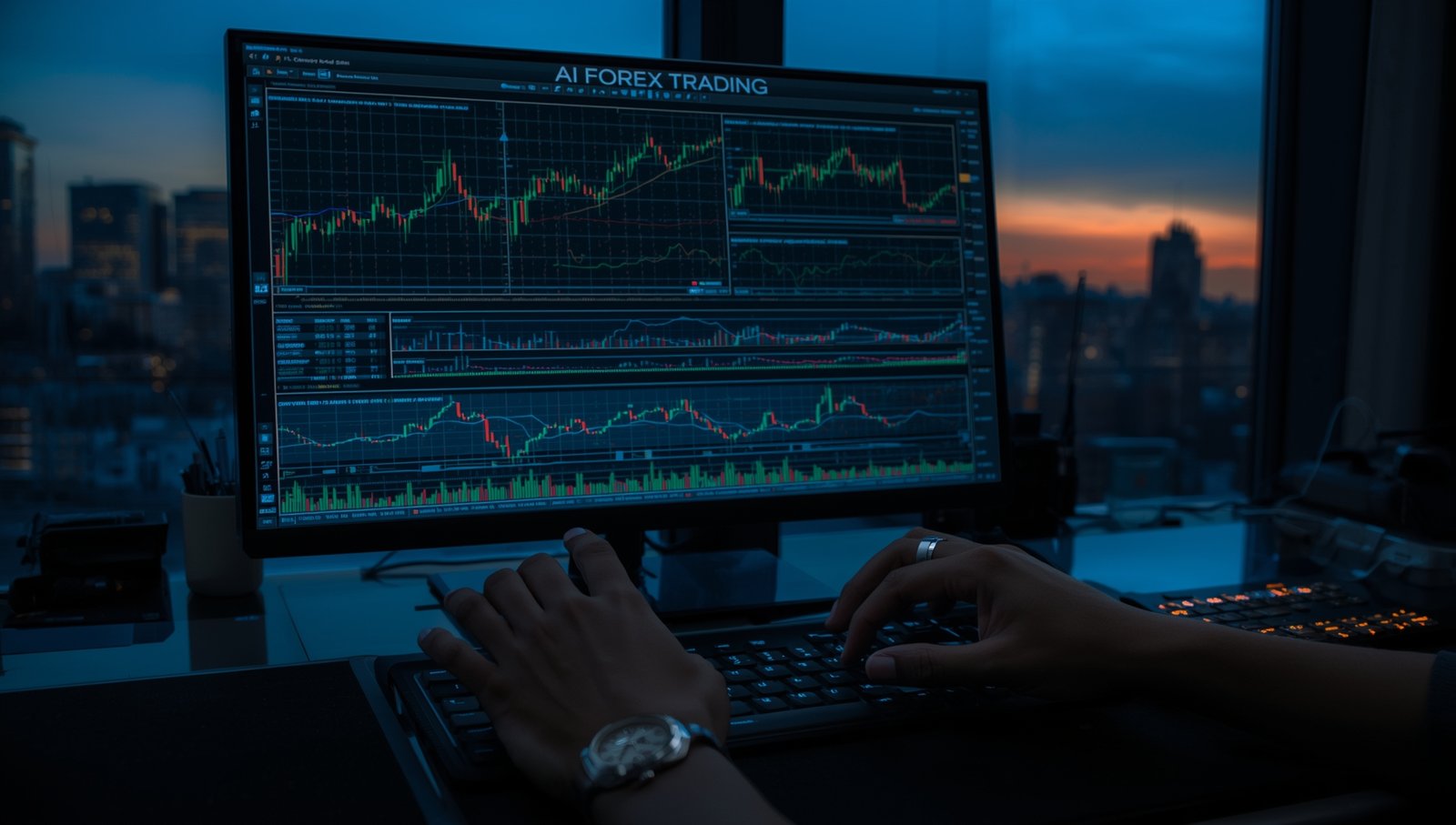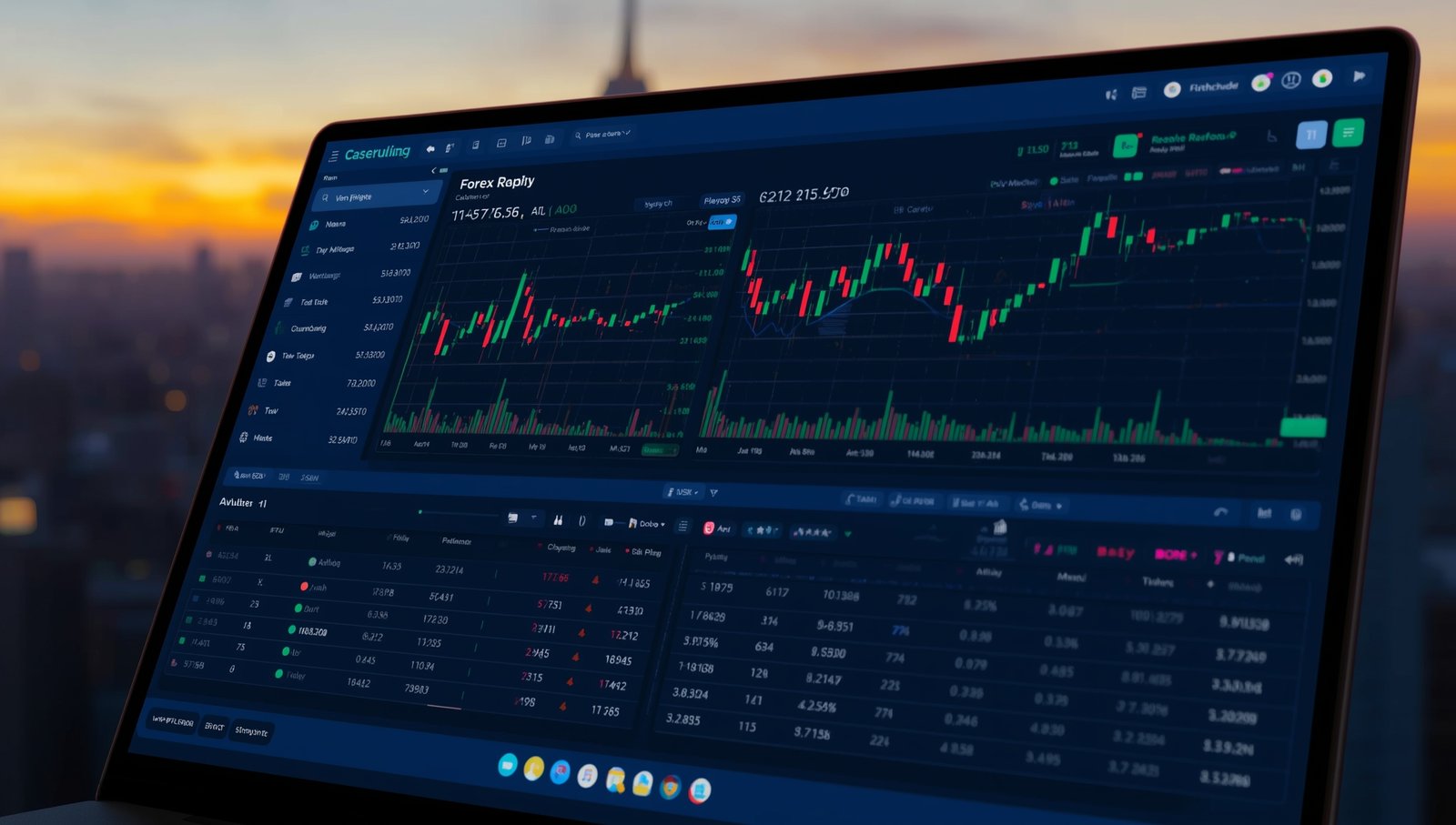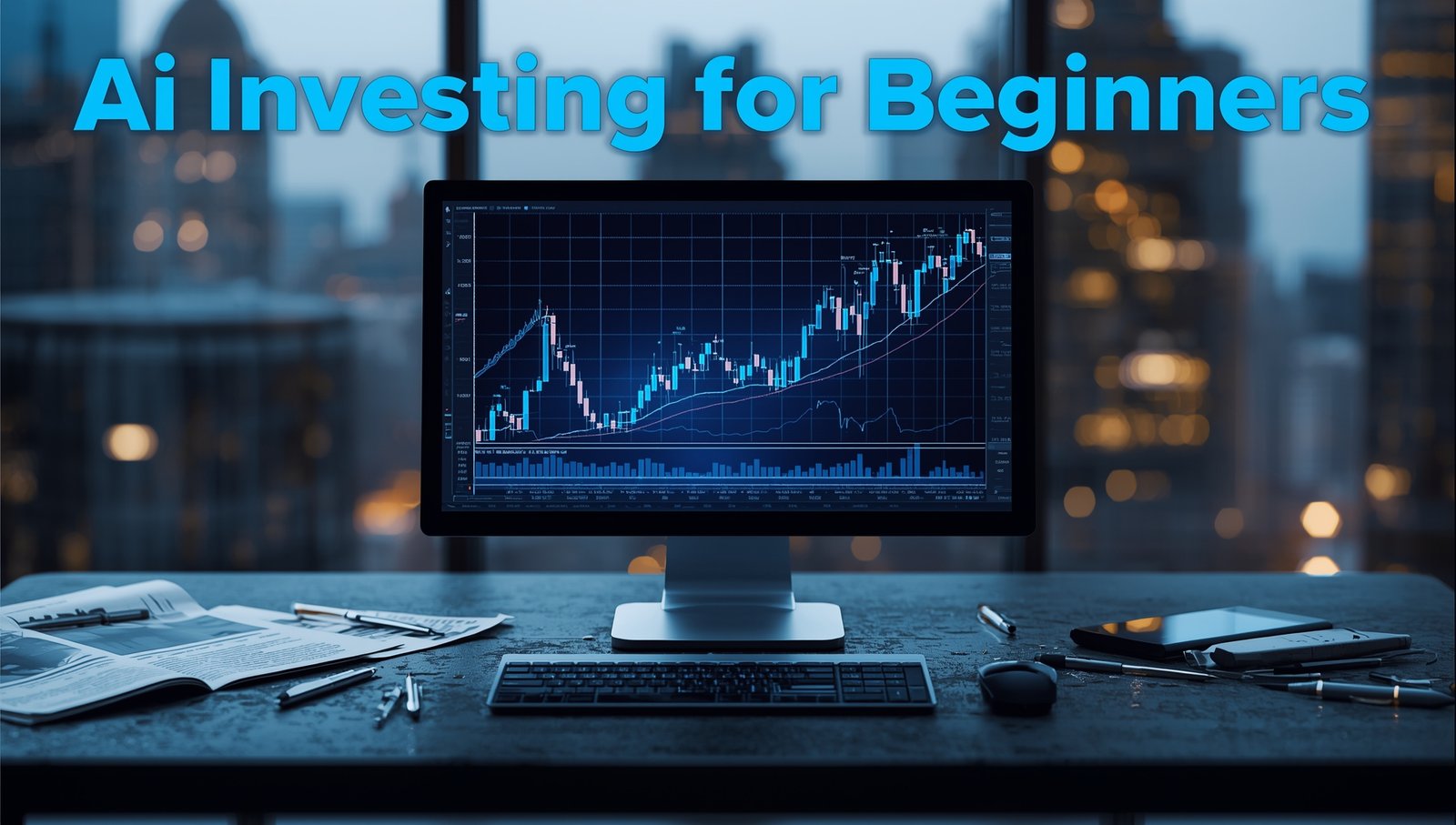Trading bots have evolved significantly over the past decade. What started as simple rule-based programs executing basic buy and sell orders has transformed into sophisticated systems powered by artificial intelligence. Machine learning now sits at the core of modern trading automation, enabling these systems to analyze market data, identify patterns, and execute trades with minimal human intervention.
Machine learning trading bots use algorithms that learn from historical market data to identify patterns and make trading decisions. These systems analyze price movements, volume, and other indicators to predict market behavior. However, all algorithmic trading carries risk, and past performance does not guarantee future results.
How Machine Learning Powers Trading Automation
Machine learning represents a subset of artificial intelligence where systems improve their performance through experience rather than explicit programming. In trading applications, these algorithms process vast amounts of market data to detect patterns that human traders might miss.
The process begins with data collection. A machine learning trading bot ingests historical price data, trading volumes, order book information, and sometimes alternative data sources like news sentiment or social media trends. This raw information feeds into mathematical models that identify correlations and relationships within the data.
These systems employ several learning approaches. Supervised learning uses labeled historical data where the algorithm knows the outcome of past trades. The system learns to recognize which market conditions led to profitable trades versus losses. Unsupervised learning identifies hidden patterns in data without predefined labels, useful for discovering new market anomalies or clustering similar market conditions.
Reinforcement learning takes a different approach. The algorithm learns through trial and error, receiving rewards for profitable trades and penalties for losses. Over time, it develops strategies that maximize returns while managing risk within parameters set by the user.
Key Components of ML-Powered Trading Systems
Understanding the architecture of these systems helps demystify how they operate. Several critical components work together to enable automated trading decisions.
Data Processing and Feature Engineering
Raw market data requires significant preprocessing before machine learning algorithms can use it effectively. Feature engineering transforms basic price and volume information into meaningful indicators. These might include:
- Moving averages across different timeframes
- Relative strength indicators
- Volatility measurements
- Order flow imbalances
- Price momentum calculations
- Support and resistance levels
The quality of these engineered features directly impacts the system’s ability to make accurate predictions. Sophisticated platforms like those offering best AI trading bot solutions invest heavily in developing robust feature sets that capture market dynamics across multiple dimensions.

Model Training and Validation
Training a machine learning model requires careful methodology to avoid common pitfalls. The historical data gets split into training sets, validation sets, and test sets. The training set teaches the algorithm, the validation set fine-tunes parameters, and the test set evaluates performance on unseen data.
Overfitting presents a significant challenge. This occurs when a model performs excellently on historical data but fails with live markets because it memorized specific patterns rather than learning generalizable strategies. Proper validation techniques help identify and prevent this problem.
Backtesting provides another crucial validation step. The trained model runs against historical data to simulate how it would have performed in real market conditions. However, backtesting has limitations since it cannot perfectly replicate actual trading conditions including slippage, latency, and liquidity constraints.
Risk Management Integration
Machine learning models generate trading signals, but risk management systems determine position sizes and set protective stops. These components work together to ensure the bot operates within user-defined risk parameters.
Users typically configure maximum position sizes, daily loss limits, and drawdown thresholds. The system monitors these constraints continuously and adjusts or halts trading when limits approach. This separation between signal generation and risk management provides an essential safety layer.
Advantages and Limitations of ML Trading Bots
Understanding both the capabilities and constraints of these systems helps set realistic expectations.
| Advantages | Limitations |
| Process large datasets quickly | Require significant training data |
| Identify complex patterns | May struggle with unprecedented events |
| Execute trades without emotion | Performance depends on data quality |
| Operate continuously without fatigue | Need ongoing monitoring and adjustment |
| Backtest strategies efficiently | Past results do not guarantee future performance |
| Adapt to changing conditions | Can amplify losses during system failures |
The emotional neutrality of algorithmic systems represents a significant advantage. Human traders often make impulsive decisions driven by fear or greed. Machine learning trading bots execute their programmed strategies consistently regardless of market volatility or recent performance.
However, these systems cannot predict genuinely novel market events. A model trained on historical data lacks context for unprecedented situations like global pandemics, sudden regulatory changes, or black swan events. During such periods, human oversight becomes critical.
Practical Considerations for Users
Anyone considering algorithmic trading should understand several practical aspects before deploying these systems with real capital.
Infrastructure Requirements
Machine learning trading bots require reliable technical infrastructure. This includes stable internet connectivity, sufficient computing resources for data processing, and secure API connections to exchanges or brokers. Latency matters significantly in fast-moving markets where milliseconds can impact trade execution quality.
Cloud-based solutions have made these systems more accessible. Rather than maintaining local servers, users can access AI trading bots through web interfaces that handle the computational heavy lifting remotely. This approach reduces technical barriers while maintaining performance.
Market Conditions and Adaptability
Markets cycle through different regimes. Trending markets behave differently than range-bound markets. High volatility periods require different strategies than calm markets. A machine learning model trained primarily on trending data may struggle when markets shift to consolidation.
Advanced systems incorporate regime detection to identify current market conditions and adjust strategies accordingly. Some platforms allow users to switch between different models optimized for specific market environments.
Monitoring and Maintenance
Automated trading does not mean unattended trading. Users should monitor their systems regularly to ensure they operate as expected. This includes reviewing trade logs, checking performance metrics, and verifying that risk parameters remain appropriate for current market conditions.
Models may require periodic retraining as market dynamics evolve. What worked effectively six months ago might lose its edge as market participants adapt and conditions change. Responsible platforms provide tools for tracking model performance degradation and facilitating updates when necessary.
Regulatory and Risk Disclosures
All trading involves substantial risk of loss. Machine learning trading bots do not eliminate this risk. Users can lose their entire invested capital, and past performance provides no guarantee of future results. Anyone using these systems should only trade with capital they can afford to lose.
Different jurisdictions regulate algorithmic trading differently. Users bear responsibility for ensuring their trading activities comply with applicable laws and regulations in their location. Platforms like Korvato provide tools but do not offer financial advice. Users make their own trading decisions and set their own risk parameters.
What This Technology Means for Individual Traders
Machine learning has democratized access to sophisticated trading strategies previously available only to institutional investors. Individual traders can now deploy algorithms that analyze multiple markets simultaneously, execute trades faster than manual methods allow, and operate around the clock.
This technological advancement does not guarantee profits. The same tools available to one trader are accessible to thousands of others. Markets remain competitive, and edge comes from how systems are configured, which data they analyze, and how effectively users manage risk.
The learning curve for these systems has flattened significantly. Early algorithmic trading required programming expertise and quantitative finance knowledge. Modern platforms provide user-friendly interfaces where traders can configure strategies, set risk parameters, and monitor performance without writing code.
Education remains important. Understanding how machine learning models make decisions helps users configure systems appropriately and recognize when manual intervention might be necessary. The most successful users combine technological tools with market knowledge and disciplined risk management.
Moving Forward with Algorithmic Trading
Machine learning trading bots represent a significant evolution in how individuals can participate in financial markets. These systems offer powerful capabilities for data analysis and trade execution while requiring users to maintain realistic expectations about risks and limitations.
Technology continues advancing rapidly. Neural networks, deep learning architectures, and natural language processing are expanding what these systems can analyze and how they make decisions. However, fundamental principles remain constant. No system eliminates trading risk, past performance never guarantees future results, and responsible risk management stays essential.
For tech enthusiasts interested in exploring this intersection of artificial intelligence and finance, starting with education and small-scale testing provides the most prudent path forward. Understanding both the technology’s capabilities and its constraints enables informed decisions about whether and how to incorporate these tools into a trading approach.



